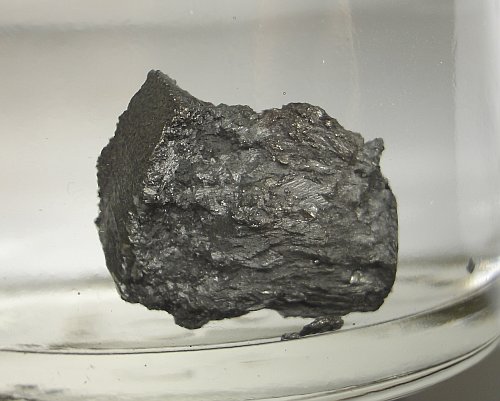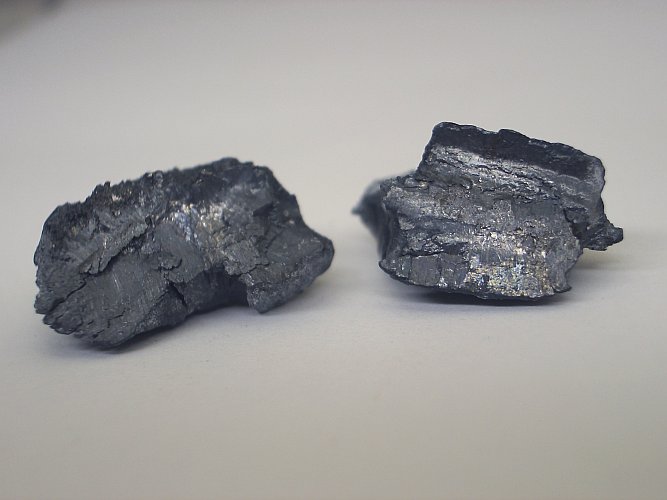


Lanthanoids (lanthanides)
The lanthanoids are all metals, which are quite reactive. They all are attacked by water, forming the hydroxide and hydrogen gas. Some of the lanthanoids must be kept under mineral oil, otherwise they are oxidized to the oxide or the hydroxide quickly. Below, pictures of erbium (left) and praseodymium (right) are given. The other lanthanides look quite similar.


The chemistry of these metals also is very similar for all of them. Their most important oxidation state is +3. In water they form aqueous Ln3+ ions (here Ln stands for one of the lanthanoid elements). Only the metals cerium and europium have aqueous redox chemistry, allowing Ce4+ and Eu2+. Cerium (IV) is a fairly strong oxidizer and europium (II) is a strong reductor.
The aqueous lanthanoid ions mostly are colorless, but there are a few exceptions. Cerium (IV) is deep yellow, praseodymium (III) is light green and erbium (III) is light pink. Some other ions are very pale yellow, most notable samarium (III). All these metals are purely basic and form insoluble hydroxides.
For the home chemist, the lanthanoids are of limited interest. They all are strong reductors, but when magnesium, aluminium and zinc are available, then the lanthanoid metals do not add very much to a home lab.
Most lanthanoid metals are offered on eBay on a regular basis. Prices are varying widely, due to differences in abundance of the elements. None of these elements, however, is particularly cheap, some of them are very expensive, exceeding the price of silver by a large factor.
Compounds of these elements are hard to find for the general public. Sometimes one of the oxides of the metals is offered on eBay. These oxides, however, may be of limited interest for the home chemist, due to inertness, caused by calcining of the oxide. A compound, which may be available from chemical supply houses is cerium (IV) sulfate or cerium (IV) ammonium sulfate or nitrate.